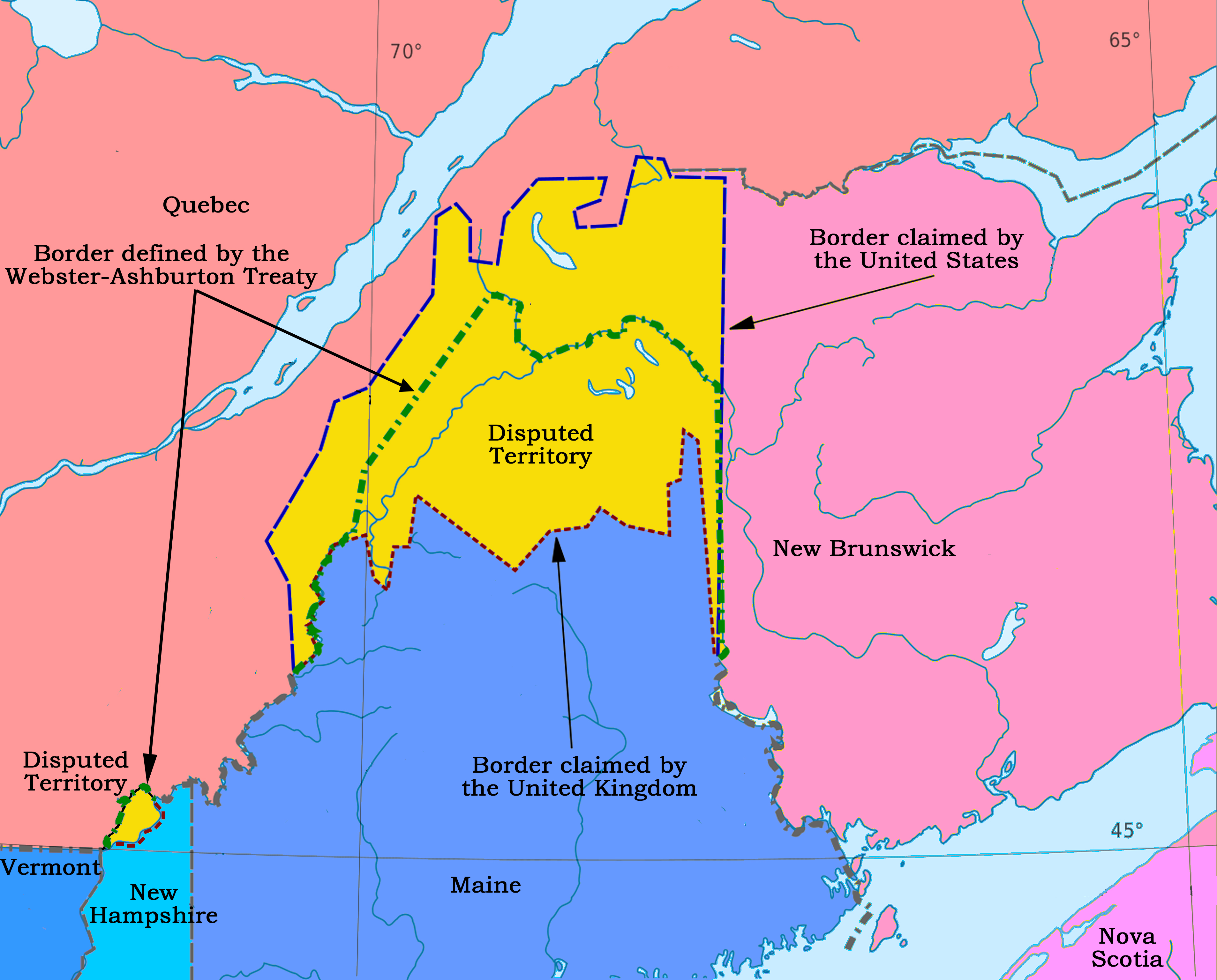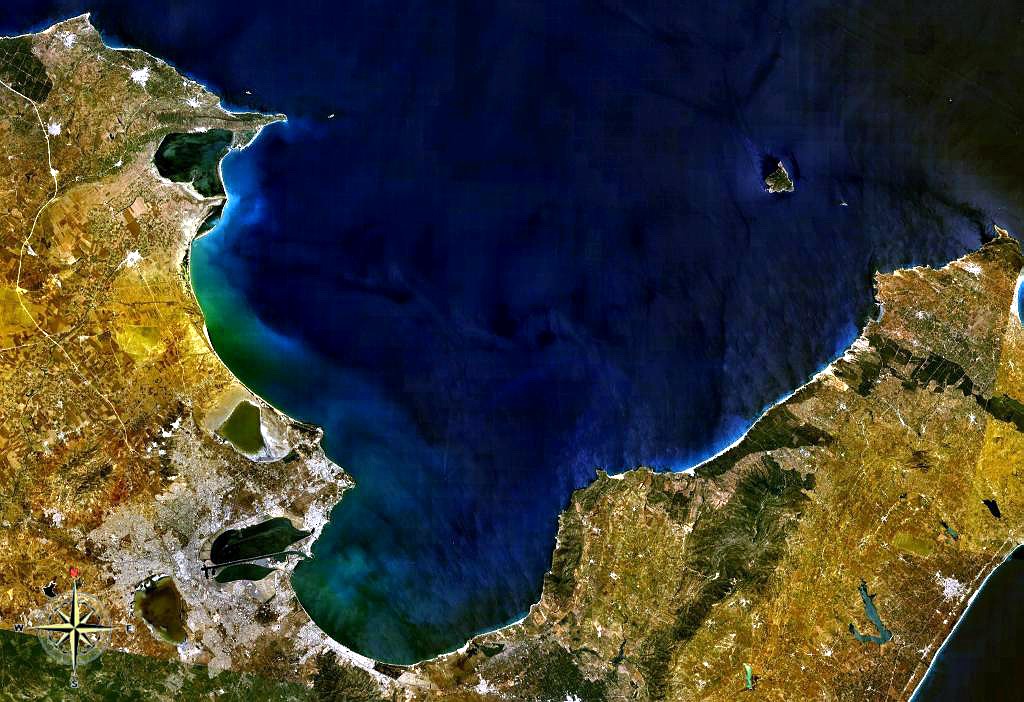|
Geography Of New Brunswick
New Brunswick () is one of Canada's three Maritimes, Maritime provinces. While New Brunswick is one of Canada's The Maritimes, Maritime Provinces, it differs from its neighbours both ethnoculturally and physiographically. Both Nova Scotia and Prince Edward Island are either wholly or nearly surrounded by water and the ocean, therefore, tends to define their climate, economy and culture. New Brunswick, on the other hand, although having a significant seacoast, is sheltered from the Atlantic Ocean proper and has a large interior that is removed from oceanic effects. New Brunswick, therefore, tends to be defined by its rivers rather than its seacoast. Physical geography Boundaries New Brunswick is bounded on the north by Quebec's Gaspé Peninsula and Bay of Chaleur and on the east by the Gulf of Saint Lawrence and Northumberland Strait. In the southeast, the Isthmus of Chignecto connects it to Nova Scotia. On its west, the province borders the United States, American state of Ma ... [...More Info...] [...Related Items...] OR: [Wikipedia] [Google] [Baidu] |
New Brunswick, Canada
New Brunswick is a province of Canada, bordering Quebec to the north, Nova Scotia to the east, the Gulf of Saint Lawrence to the northeast, the Bay of Fundy to the southeast, and the U.S. state of Maine to the west. It is part of Eastern Canada and is one of the three Maritime provinces and one of the four Atlantic provinces. The province is about 83% forested and its northern half is occupied by the Appalachians. The province's climate is continental with snowy winters and temperate summers. New Brunswick has a surface area of and 775,610 inhabitants (2021 census). Atypically for Canada, only about half of the population lives in urban areas - predominantly in Moncton, Saint John and Fredericton. In 1969, New Brunswick passed the Official Languages Act which began recognizing French as an official language, along with English. New Brunswickers have the right to receive provincial government services in the official language of their choice. About two thirds of the pop ... [...More Info...] [...Related Items...] OR: [Wikipedia] [Google] [Baidu] |
Saint John River (Bay Of Fundy)
The Saint John River (; Maliseet-Passamaquoddy: ''Wolastoq'') is a river flowing within the Dawnland region from headwaters in the Notre Dame Mountains near the Maine-Quebec border through western New Brunswick to the northwest shore of the Bay of Fundy. Eastern Canada's longest river, its drainage basin is one of the largest on the east coast at about . This “River of the Good Wave” and its tributary drainage basin formed the territorial countries of the Wolastoqiyik and Passamaquoddy First Nations (named Wolastokuk and Peskotomuhkatik, respectively) prior to European colonization, and it remains a cultural centre of the Wabanaki Confederacy to this day. The Webster–Ashburton Treaty following the Aroostook War established a border between New Brunswick and Maine following of the river, while a tributary forms of the border between Quebec and Maine. Maine communities along the river include Fort Kent, Madawaska, and Van Buren. New Brunswick settlements through ... [...More Info...] [...Related Items...] OR: [Wikipedia] [Google] [Baidu] |
Saint John River (New Brunswick)
The Saint John River (; Maliseet-Passamaquoddy: ''Wolastoq'') is a river flowing within the Dawnland region from headwaters in the Notre Dame Mountains near the Maine-Quebec border through western New Brunswick to the northwest shore of the Bay of Fundy. Eastern Canada's longest river, its drainage basin is one of the largest on the east coast at about . This “River of the Good Wave” and its tributary drainage basin formed the territorial countries of the Wolastoqiyik and Passamaquoddy First Nations (named Wolastokuk and Peskotomuhkatik, respectively) prior to European colonization, and it remains a cultural centre of the Wabanaki Confederacy to this day. The Webster–Ashburton Treaty following the Aroostook War established a border between New Brunswick and Maine following of the river, while a tributary forms of the border between Quebec and Maine. Maine communities along the river include Fort Kent, Madawaska, and Van Buren. New Brunswick settlements through wh ... [...More Info...] [...Related Items...] OR: [Wikipedia] [Google] [Baidu] |
Grand Falls Raging Waterfall
Grand may refer to: People with the name * Grand (surname) * Grand L. Bush (born 1955), American actor Places * Grand, Oklahoma, USA * Grand, Vosges, village and commune in France with Gallo-Roman amphitheatre * Grand County (other), several places * Grand Geyser, Upper Geyser Basin of Yellowstone, USA * Le Grand, California, USA; census-designated place * Mount Grand, Brockville, New Zealand Arts, entertainment, and media * ''Grand'' (Erin McKeown album), 2003 * "Grand" (Kane Brown song), 2022 * ''Grand'' (Matt and Kim album), 2009 * ''Grand'' (magazine), a lifestyle magazine related to related to grandparents * ''Grand'' (TV series), American sitcom, 1990 * Grand Production, Serbian record label company Other uses * Great Recycling and Northern Development Canal, also known as GRAND Canal * Grand (slang), one thousand units of currency * Giant Radio Array for Neutrino Detection, also known as GRAND See also * * * Grand Hotel (other) * Grand statio ... [...More Info...] [...Related Items...] OR: [Wikipedia] [Google] [Baidu] |
Notre Dame Mountains
The Notre Dame Mountains are a portion of the Appalachian Mountains, extending from the Gaspé Peninsula of Quebec to the Green Mountains (Vermont), Green Mountains of Vermont. The range runs from northeast to southwest, forming the southern edge of the St. Lawrence River valley, and following the Canada–United States border between Quebec and Maine. The mountainous Madawaska County, New Brunswick, New Brunswick "panhandle" is located in the Notre Dame range as well as the uppermost reaches of the Connecticut River valley in New Hampshire. As the mountains are geologic timescale, geologically old, they have erosion, eroded to an average height of around . Etymology ''Notre Dame'' is French for "Our Lady," a Catholic term referring to Veneration of Mary in Roman Catholicism, the Virgin Mary. While on an expedition on 15 August 1535, Jacques Cartier wrote: The ''jour Notre Dame d'aoust XVe'' refers to the feast of the Assumption of Mary, commemorated in the Catholic Church on ... [...More Info...] [...Related Items...] OR: [Wikipedia] [Google] [Baidu] |
Appalachian Mountains
The Appalachian Mountains, often called the Appalachians, are a mountain range in eastern to northeastern North America. The term "Appalachian" refers to several different regions associated with the mountain range, and its surrounding terrain. The general definition used is one followed by the United States Geological Survey and the Geological Survey of Canada to describe the respective countries' Physiographic region, physiographic regions. The U.S. uses the term Appalachian Highlands and Canada uses the term Appalachian Uplands; the Appalachian Mountains are not synonymous with the Appalachian Plateau, which is one of the provinces of the Appalachian Highlands. The Appalachian range runs from the Newfoundland (island), Island of Newfoundland in Canada, southwestward to Central Alabama in the United States; south of Newfoundland, it crosses the 96-square-mile (248.6 km2) archipelago of Saint Pierre and Miquelon, an overseas collectivity of France, meaning it is technica ... [...More Info...] [...Related Items...] OR: [Wikipedia] [Google] [Baidu] |
North Shore, New Brunswick
The North Shore is a region in the northeastern part of the Canadian province of New Brunswick. Specifically, it refers to the province's northern shoreline which borders Chaleur Bay, a sub-basin of the Gulf of St. Lawrence as well as the estuary portion of the Restigouche River, including all coastal communities between Tide Head and Lameque Island. The North Shore faces the southern shore of Quebec's Gaspe Peninsula. The area contains the northwestern coast of the Acadian Peninsula in Gloucester County, a predominantly French-speaking area, as well as English-speaking areas in the cities of Bathurst and Campbellton and the town of Dalhousie. The North Shore is also the home of the Mi'kmaq Eel River Bar First Nation. The geographic area of the North Shore is sometimes expanded to include areas along New Brunswick's east coast on the Gulf of St. Lawrence from Lameque Island to Miramichi Bay and sometimes to include the estuarine portions of the Miramichi Valley T ... [...More Info...] [...Related Items...] OR: [Wikipedia] [Google] [Baidu] |
Gulf Of St
A gulf is a large inlet from an ocean or their seas into a landmass, larger and typically (though not always) with a narrower opening than a bay (geography), bay. The term was used traditionally for large, highly indented navigable bodies of salt water that are enclosed by the coastline. Many gulfs are major shipping areas, such as the Persian Gulf, Gulf of Mexico, Gulf of Finland, and Gulf of Aden. See also * References External links * {{Geography-stub Gulfs, Bodies of water Coastal and oceanic landforms Coastal geography Oceanographical terminology ... [...More Info...] [...Related Items...] OR: [Wikipedia] [Google] [Baidu] |
Miramichi Bay
Miramichi Bay is an estuary located on the west coast of the Gulf of St. Lawrence in New Brunswick, at the mouth of the Miramichi River. Miramichi Bay is separated into the "inner bay" and the "outer bay", with the division being a line of uninhabited barrier islands which are continually reshaped by ocean storms. The largest of these islands is the uninhabited Portage Island, which was broken in two during a violent storm in the 1950s. The islands provide some protection to the inner bay from ocean storms in the Gulf of St. Lawrence. Overview Miramichi Bay is one of the largest bays along the northeastern coast of New Brunswick, Canada. The Maritime Plain, an area of low-relief extending from Chaleur Bay southward to Cape George, Nova Scotia, Cape George, surrounds it. The Bay is a triangular shape, and approximately 45 km along the north and south coasts, and 32 km along the seaward end, making its surface area greater than 300 km2. Miramichi Bay was named b ... [...More Info...] [...Related Items...] OR: [Wikipedia] [Google] [Baidu] |
Mississippi River
The Mississippi River is the main stem, primary river of the largest drainage basin in the United States. It is the second-longest river in the United States, behind only the Missouri River, Missouri. From its traditional source of Lake Itasca in northern Minnesota, it flows generally south for to the Mississippi River Delta in the Gulf of Mexico. With its many tributaries, the Mississippi's Drainage basin, watershed drains all or parts of 32 U.S. states and two Canadian provinces between the Rocky Mountains, Rocky and Appalachian Mountains, Appalachian mountains. The river either borders or passes through the states of Minnesota, Wisconsin, Iowa, Illinois, Missouri, Kentucky, Tennessee, Arkansas, Mississippi, and Louisiana. The main stem is entirely within the United States; the total drainage basin is , of which only about one percent is in Canada. The Mississippi ranks as the world's List of rivers by discharge, tenth-largest river by discharge flow, and the largest ... [...More Info...] [...Related Items...] OR: [Wikipedia] [Google] [Baidu] |
Restigouche River
The Restigouche River (, ) is a river that flows across the northwestern part of the province of New Brunswick and the southeastern part of Quebec. The river flows in a northeasterly direction from its source in the Appalachian Mountains of northwestern New Brunswick to Chaleur Bay. Its meander length is approximately . The Restigouche is fed by several tributaries flowing south from Quebec's Notre Dame Mountains on the western edge of the Gaspé Peninsula (Kedgwick River, Gounamitz River, Patapédia River, and Matapedia River) as well as the Upsalquitch River flowing north from New Brunswick's ''Chaleur Uplands''. Located mostly in New Brunswick, the river forms the inter-provincial boundary between the two provinces from its confluence with the Patapédia River to its mouth at Dalhousie, New Brunswick and Miguasha, Quebec where it discharges into Chaleur Bay. The estuary is in length, extending from the river's discharge point at Dalhousie in the east to Tide Head, New Brun ... [...More Info...] [...Related Items...] OR: [Wikipedia] [Google] [Baidu] |






